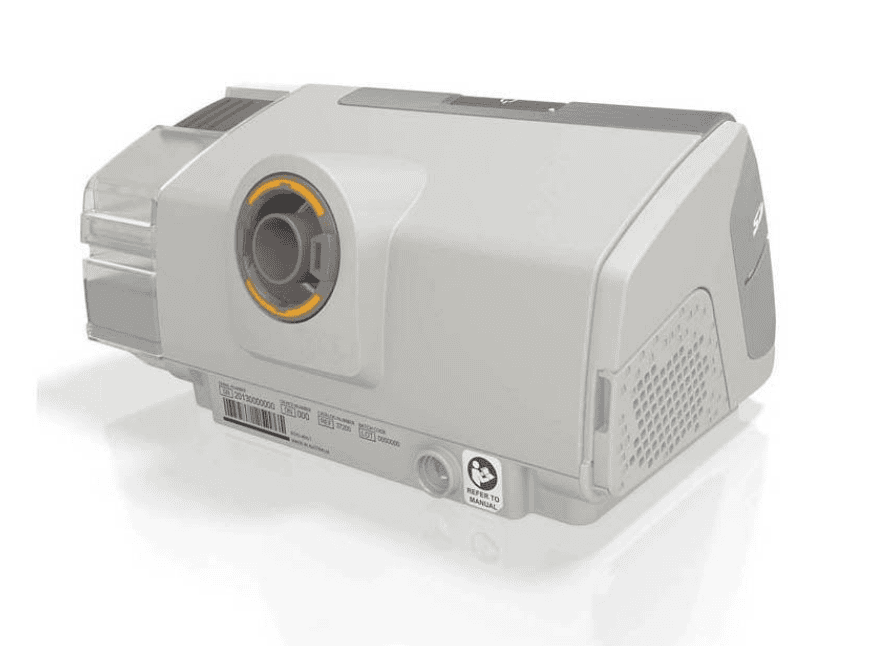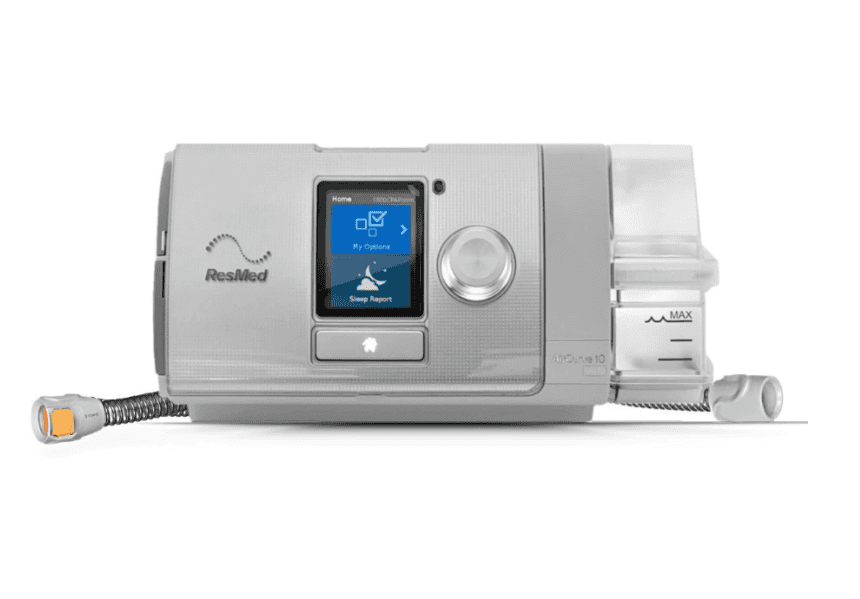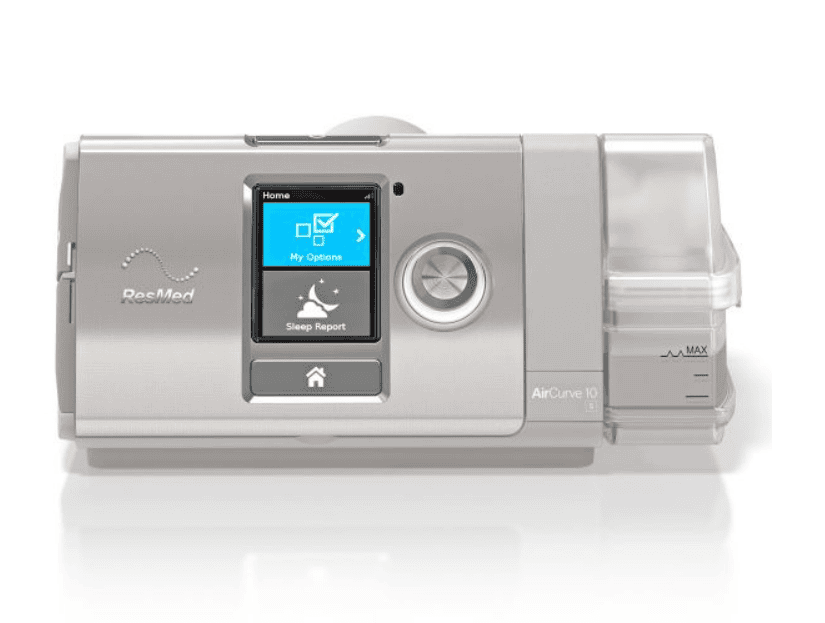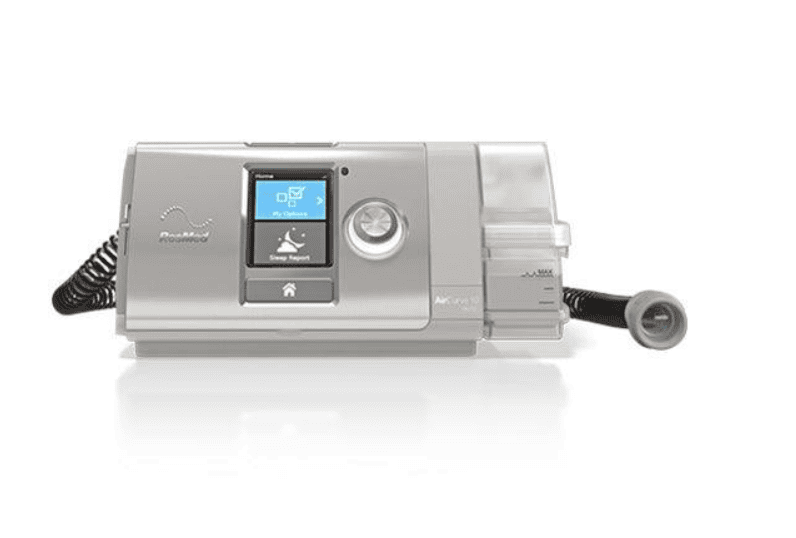VPAP (Variable Positive Airway Pressure) is a modern medical device used to treat various respiratory diseases, including obstructive sleep apnea (OSA), central sleep apnea, and other diseases that require airway support. VPAP devices provide an adaptive supply of pressurized air, which helps to improve breathing during sleep.
On this post, let’s take a closer look at VPAP devices as an effective treatment for respiratory diseases.
The principle of operation of VPAP devices.
VPAP devices operate on the basis of variable positive airway pressure technology. Unlike CPAP devices, which provide constant pressure, VPAP devices adapt the pressure according to the phase of the patient's respiratory cycle – increasing the pressure during inhalation and decreasing it during exhalation.
The main components of a VPAP device:
- Compressor. It is responsible for creating and delivering pressurized air to the patient's mask.
- Control system. Determines the required pressure level depending on the patient's respiratory cycle and adjusts the device accordingly.
- Mask. Delivers air to the patient's airways, ensuring tightness and comfort.
- Tubes and filters. Provide clean air supply and removal of exhaled carbon dioxide.

Advantages of VPAP devices.
They have a number of advantages that make them an effective means of treating respiratory diseases:
- Adaptability. They automatically adjust the pressure depending on the patient's needs, which ensures more natural and comfortable breathing.
- Improved sleep quality. Reduces the number of episodes of apnea and hypopnea, which helps to improve the quality of sleep and overall well-being of the patient.
- Reducing the burden on the heart. Improved breathing reduces the burden on the cardiovascular system, which is important for patients with heart disease.
- Increased oxygenation. Helps maintain optimal oxygen levels in the blood, which is important for the normal functioning of organs and body systems.
- Comfort and convenience. Modern models are equipped with various modes and settings, which allows you to choose the best therapy option for each patient.

Application of VPAP Machines in Respiratory Treatment
VPAP Machines are used to treat various respiratory diseases, including:
Obstructive Sleep Apnea (OSA)
Obstructive sleep apnea is characterized by periodic stops in breathing during sleep due to obstruction of the upper airways. VPAP machines help keep the airways open, reducing the number of apnea episodes and improving sleep quality.
Central Sleep Apnea
Central sleep apnea is caused by a malfunction in the central nervous system, which fails to send signals to breathe. VPAP machines help stabilize breathing by providing the necessary pressure during inhalation and exhalation.
Hypoventilation Syndromes
Patients with hypoventilation syndromes have reduced lung ventilation, leading to hypoxia. VPAP devices help improve ventilation, increasing the oxygen levels in the blood.
Pulmonary Hypertension
VPAP machines can be used to support breathing in patients with pulmonary hypertension, reducing the strain on the heart and improving blood oxygenation.

Features of Using VPAP Machines
Mask Selection
Choosing the right mask is crucial for the effectiveness of VPAP therapy. There are different types of masks:
- Nasal Masks: For patients who breathe through their nose.
- Oral Masks: For patients who breathe through their mouth.
- Full-Face Masks: Cover both the nose and mouth, providing maximum seal.

Care for the Device
Regular cleaning and maintenance of the VPAP machine and mask are essential to ensure their effectiveness and longevity. It is recommended to:
- Daily Cleaning of the Mask and Tubes: Use a mild detergent and warm water.
- Regular Filter Replacement: Replace filters according to the manufacturer's recommendations.
- Machine Check and Maintenance: Regularly inspect the condition of the machine and perform maintenance as needed.
VPAP machines are an effective treatment for respiratory diseases, providing adaptive air pressure delivery and improving breathing during sleep. They offer several benefits, including adaptability, improved sleep quality, reduced strain on the heart, and increased blood oxygenation.
Proper mask selection, device settings, and maintenance are key factors for achieving maximum therapy effectiveness. VPAP helps patients improve their quality of life and effectively manage respiratory disease symptoms.


